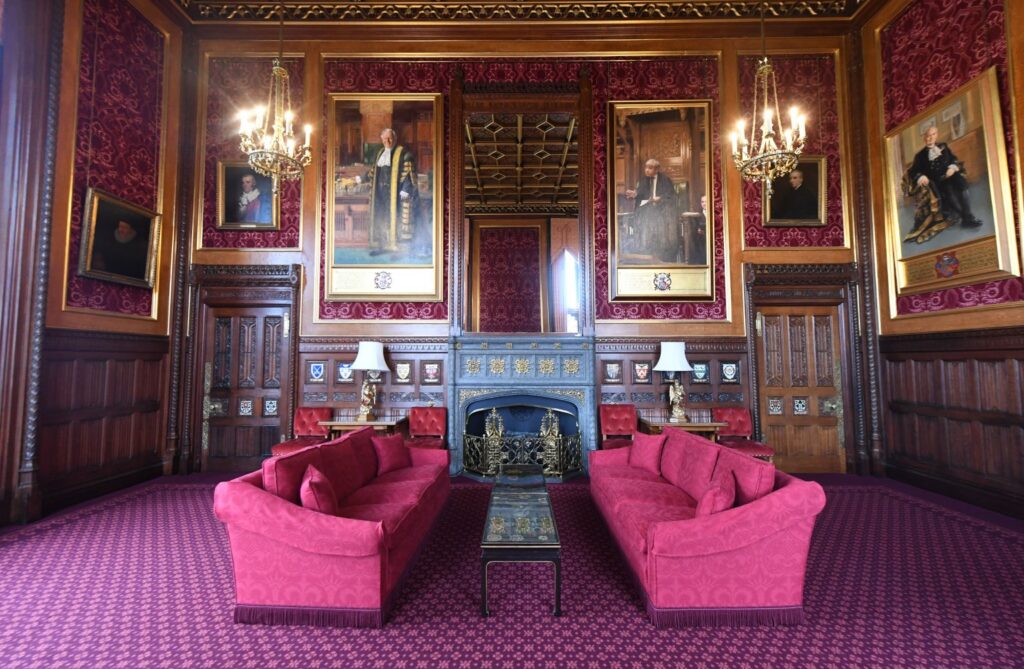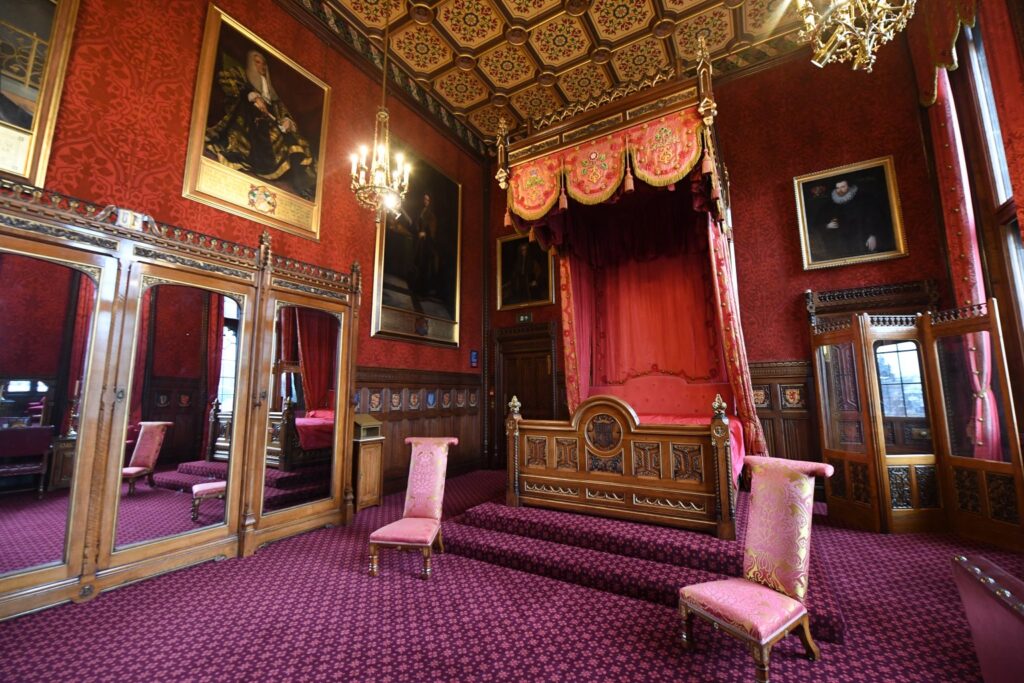The Houses of Parliament have a variety of tours available. I visited Speaker’s House during the Easter 2022 trial to see if there was public interest. There clearly was so I returned in summer 2023 with the teen who is studying history.
On the 75-minute tour, you get to find out about the history and traditions of the role and how the current Speaker conducts official business. There are impressive artworks on display including a unique set of 46 portraits of Speakers through the years. This is where the Speaker lives but the tour focuses on the state rooms on the first floor which are as grand as the state rooms at Buckingham Palace.
What Is A Speaker?
The role of the Speaker has existed since at least 1377 and has a long history of evolving responsibilities and traditions. The Speaker’s role today is to chair debates in the House of Commons Chamber, but he also represents the House of Commons on a national and international level.
The current Speaker is The Rt Hon Sir Lindsay Hoyle, Member of Parliament for the constituency of Chorley, Lancashire. He became the 158th Speaker of the House of Commons on 4 November 2019.

The Tour
The tour starts and ends at the 900-year-old Westminster Hall. Speaker’s House isn’t so old though as it was one of the new buildings needed after the 1834 fire that destroyed most of the Palace of Westminster (the proper name for the Houses of Parliament). Speaker’s House was started in 1844 and finished in 1859. It’s a five-storey townhouse near the base of ‘Big Ben’.
Grand Staircase
After an introductory talk in Speaker’s Court, outside the building, you enter and ascend the Grand Staircase. This may look palatial as it was based on one similar at St James’s Palace.
There’s a huge fireplace on the landing turn and the newel posts are topped with a flag-holding gold griffin and royal lion.

After a stop at the top of the staircase, you pass through a corridor to reach the Speaker’s Office (also called the Morning Room). We were advised to look at the Hans Holbein painting of King Henry VIII’s advisor, Thomas More. But I noticed photos of President Zelensky’s visit and a key that was marked ‘Guy Fawkes key’. It’s a circular tour so you do not get to come back to see these so I was a bit distracted at the next stop.
While our guide explained the Morning Room’s use and pointed out some of the portraits on display, I wanted to know why there was a jet fighter pilot’s helmet in a glass cabinet. It turned out it was a gift from President Zelensky.
I did discover that the public can watch the Speaker’s procession to the House of Commons but I missed at what time.
Crimson Room
This is the principal reception room and is often used for entertaining.
When admiring the portraits, we learned that Speaker John Trevor in 1685 had a squint so members of parliament were never sure who he was talking to. Because of this, Speakers now have to know the name and constituency of the MP they are addressing in the House of Commons.
I also learned that the portraits of speakers wearing red meant they came from the clergy and those wearing black came from the legal profession.

Corner Room
This is considered a ‘room of firsts’ as there is the portrait of John Bercow (the first Jewish Speaker) and Betty Boothroyd (the first, and only, female Speaker).
Speakers generally came from nobility so had their own coat of arms. These are displayed around the room. As women were not expected to go into battle, Betty Boothroyd had to design her own. She chose a diamond shape because she could.
As well as the portraits and the silk-lined walls do notice the exquisite linenfold wooden panelling. You can see more of this at Paycockes House in Essex and Sutton House in east London.

State Dining Room
A wonderfully impressive room, this was where Charles and Diana had their engagement dinner. The silver service currently in use is from 1835–36.

State Bedroom
This is where historically the monarch was invited to sleep the night before their coronation. As Queen Victoria lived nearby at Buckingham Palace there was probably less need for this tradition, plus the fact the room wasn’t ready in 1838 for her coronation.

All profits from these tours go to the Speaker’s Art Fund, (registered charity number 1105968) which supports arts and educational projects with a focus on increasing understanding of Parliamentary democracy across the UK.
I have written a more in-depth look at the building and the tour for Londontopia. And you can find out more about each room on the Parliament website.
Visitor Information
The tour only runs during times when the MPs are in recess.
There is a choice of tours available at the House of Parliament.
More info: www.parliament.uk/visiting/visiting-and-tours/